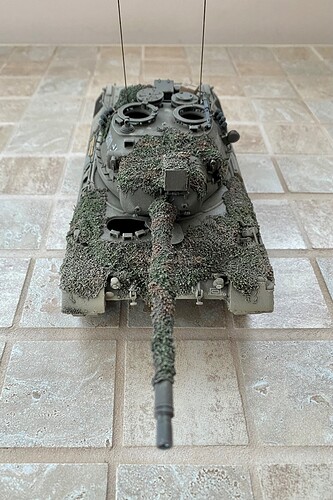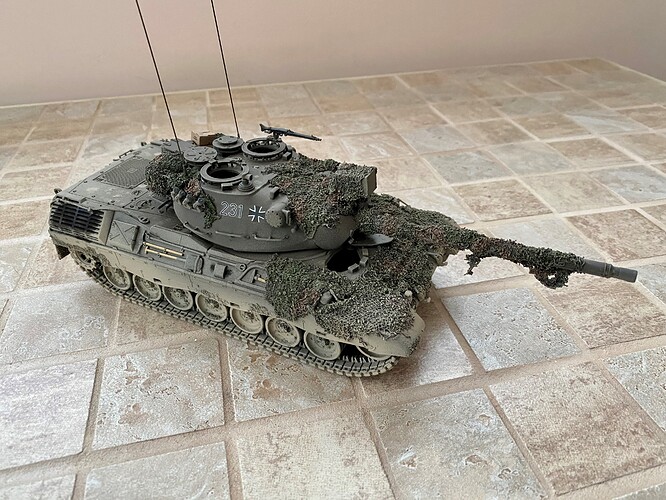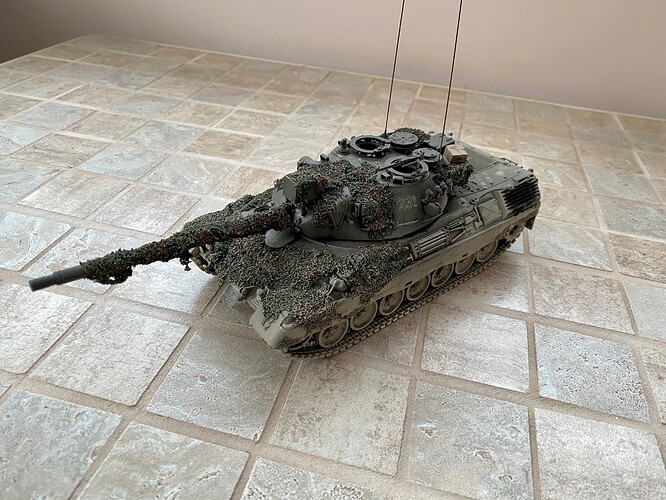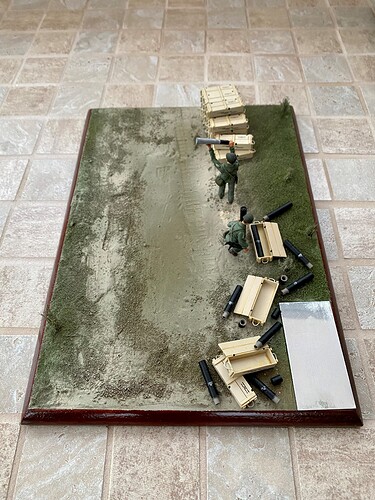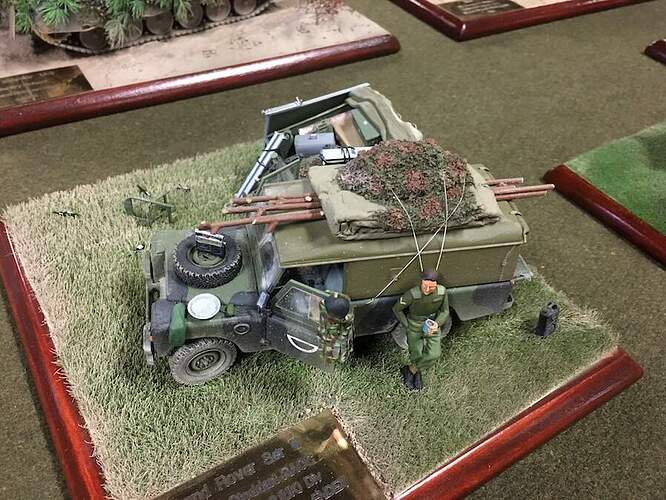Dale, that’s very kind of you; let’s hope I can complete it in the next week or so and bring the whole idea off.
Ok Brian, one of our Bundeswehr vets got back to me. With the time zone differences, I was happy for such a timely reply. ( a helpful bump of the post didn’t hurt either)
Anyways, the cans were not stenciled, but they were stamped with lot numbers and production dates. The stamping was on the top of the can under the carry handle. Here’s a link to a google search that I did using his German search words.
[Bundeswehr MG Gurtkasten Munitionskisten MG](https://Bundeswehr MG Gurtkasten Munitionskisten MG)
Carlos, many thanks for that; I identified more or less the same images and although the evidence was staring me in the face ie no markings - it seemed so unlikely for there not to be any. However, mystery solved; I’ll have a stab at perhaps a paper sticker and proof seal or production label whatever (which appears to be orange so is in fact in accordance with NATO-ology) in due course.
Thanks for your help and that of your Bundeswehr acquaintance.
Anytime Brian. We just needed to know what to look for.
Chaps - at long last a bit of an update - apologies for the delay in this somewhat drawn-out project; no excuse save a little bit of pandemic ennui which really I should be able to rise above(!)
However, a couple of pics:
And the base just about done:
veery nice job !
how do you manage the rear basket ?
Great job! Love the finish especially the dusting and the camo nets look great !
Lovely job Brian, it’s coming on a treat. The cam net is the icing for me… So hard to pull off (literally as well lol ) but you always crack it … 

The rear basket is filled mainly with camouflage netting, and a tarpaulin (folded); I added a cardboard ration box yet to be broken down by the crew and stowed within the tank.
For the stowed net I used a chunk of Milliput, covered with gauze and then used tea leaves.
Thanks Richard!
Thanks John; yeah, disentangling cam nets from anything could be a struggle - even just moving them out of the stores(!)
I’m just trying to complete a decent Commander figure then hopefully it will all come together.
You guys didn’t have a cover/bag for storing the nets?
Fat chance; even if there were a NATO Part Number for them the Quartermasters I knew would conspire against any such procurement; they were either incompetent, or lazy or both. God forbid that they’d do anything to assist the HQ Staff they were meant to be supporting.
No, we just struggled on with either the older Hessian-strip type nets or the later plastic ones. The thing was that the nets alone were deemed to be insufficient concealment so we lugged around vast swathes of Hessian, sometimes painted in camouflage swirls, but sometimes not. This provided the first layer draped on a vehicle (I’m talking soft-skins here not APCs) as that way any shine from glass was nullified or even the shine from glossy paint finishes (think Deep Bronze Green); the nets were then arranged over this and propped up by poles. These were usually fir saplings that had been “obtained” from whatever wooded real estate we could find. I don’t recall seeing proper issued camouflage poles and spreaders until the 90s. Both Hessian and the nets were stowed on the carrying vehicle in such a way as to facilitate easy camouflage once halted. For an example of that see my Land Rover model below:
A huge disadvantage of using Hessian is that when wet it weighs around a ton! Or at least it feels like it when one is wrestling with it at say, 0200hrs in full NBC kit, using a red filtered torch and encumbered with webbing, steel helmet and weapon. Lots of fun – not. Around the 80s it was replaced with a lightweight grey plastic woven material, which true to the normal abysmal British Army procurement system was shiny so technically didn’t work. However, at least it didn’t increase in weight when wet.
After exercise, nets, Hessian and poles were normally just dumped in the stores, in a tin hut such as I encountered at Tidworth in UK, or the cellars of some monolithic Kaiser/Wehrmacht barracks (and excellent constructs they were too). They should have all been pulled out to dry off and repaired if necessary, but all too often that was overlooked in the rush to capitalise on ENDEX (End of Exercise).
So, there they stewed until the next exercise when aghast at duty ill-done, we would again wrestle with these smelly heavy combinations and begin yet another sojourn in a German forest or village somewhere. To this day if I close my eyes and think back I can still smell wet Hessian and the dusty plasticky aroma of scrim patches.
Great story Brian lol. I recall getting snared in camo nets all the time just trying to put them up or take them down, sometimes just walking to close to one and my weapon would get caught. That is a great job on that Rover btw!
Thanks Richard; it was always the cocking handle on our Sub Machine Guns or so it seemed with me. There’s a little bit more on the Rover as well as a description of some aspects of a a typcial exercise within the Campaign - “Golden Memories” if you’re interested. God knows how you find it and I don’t know how to cross-reference it I’m afraid, mind you, you’ll be underwhelmed I’m sure!
Thanks I’ll try to track it down
Here you go Richard @metalhead85
Oh great thanks so much John!
Carlos, Without hijacking Brian’s thread I will elaborate a bit on the cam nets for MBTs.
We didn’t have stowage bags as @BootsDMS said. Chieftain and Chally methods were similar and improved slightly in the late 80s when the new Cam system was introduced. Before then prior to going on exercise, we would drape the tank sheet (heavy duty tarp/rubberised sheet or a thermal sheet which was usually 3/4 or the full size of the tank) over the wagon and then put the cam net over that and either roll or fold it in on itself and then stow it. Chieftain was in one of the turret side basket and Chally was in the basket on the front of the turret. Then on exercise you just unrolled it over the tank when you wanted up and in theory it didn’t catch on to much of tank snagging it. In theory lol.
When the cam system was brought in, the nets became stronger and you also got about 20 to 30 fibreglass flexible poles which allowed you to create a full or partial garage effect letting drive the Chally in and out while leaving the cam net up. This did greatly improve the reaction times and was far easier all round.
CVRT was a bit different but pretty similar, baring in mind it’s so small it’s a lot easier to conceal and alot of the time you can do it without getting a cam net out if you know what your doing.
A good crew could get a full cam net up on a Chally in about 20minutes to a reasonable state, 30 to 40 minutes to be immaculate and fully hidden.and 10 minutes to break it down and bug out…
CVRT is even quicker to put up when needed and those cam nets were again rolled up on a tank sheet and stowed in a hull side basket or occasionally wrapped around the turret or in the top basket on Striker/Spartans.
The other thing we would try and do is stay on immediate notice to move which meant no cam…
15 to 30min NTM would be partial cam facing the enemy only, and anything over 30min NTM would be full cam with overhead cover…hope that explains it a bit more for tanks/AFVs.
Thanks for the explanation guys. All I can say is that I feel for ya. In the field was similar for us, but to and from, and in storage, our nets had a nice bag to store them in, and a separate one for the poles and spreaders. Stateside we used a lot more foliage cut from the local greenery. But in Germany, we were not allowed to do that, and had to use nets.
Anyways I don’t want to continue the hijack of the thread and look forward to more updates on the Leo!
